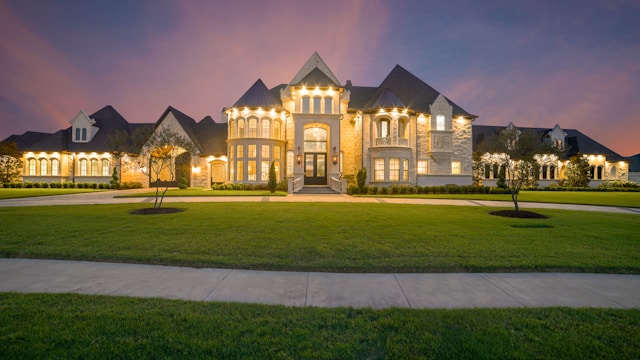When designing your dream home in Central Florida, you’ll need to navigate the state’s specific building codes and climate considerations. The custom home building process typically spans 12 to 14 months, including 4 to 6 months for pre-construction and 9 to 11 months for construction. Guarantee compliance with the Florida Building Code, especially the upcoming 8th Edition effective December 31, 2023. Choose materials that resist humidity and UV damage, and consider energy-efficient features. A design-build approach can unify your team, save time, and reduce costs. Incorporate personal style through large windows, sliding glass doors, and functional spaces. Obtaining all necessary permits before construction is essential to avoid delays. By understanding these elements, you’ll be well on your way to creating a home that’s both aesthetically appealing and functionally sound, and there’s more to explore to make your vision a reality.

Understanding the Custom Home Building Process
When building a custom home in Central Florida, you can expect a process that typically spans around 12 to 14 months from the initial meeting to moving in. This home construction process can be broken down into two main stages: pre-construction and construction.
During the pre-construction phase, which lasts about 4 to 6 months, you will engage in site visits, design work, and choosing materials. This period also involves securing necessary permits, a process that usually takes four to six weeks, depending on county approvals.
The construction phase, taking around 9 to 11 months, is where the site is prepared, the house frame is built, and the roof is installed. Utilities such as water, sewer, and electrical lines are set up, and both exterior and interior finishes are completed. Site preparation includes leveling the ground, clearing debris, and pouring the foundation, whether it’s a slab or a stilt foundation for areas prone to flooding.
Your decisions and the availability of materials can greatly impact the timeline. Regular meetings with your builder or project supervisor will keep you updated on the progress of your home, ensuring that every detail aligns with your vision for your custom home in Central Florida. This thorough guide to the custom home building process will help you navigate each step, making your dream home a reality.
Key Considerations for Building in Central Florida
Building a custom home in Central Florida involves several key considerations that can substantially impact the cost, timeline, and overall quality of your dream home. One of the most vital factors is complying with local building regulations. The Florida Building Code, which is updated periodically, will see its 8th Edition come into effect on December 31, 2023. This update includes new rules for replacement windows, doors, and garage doors, so it’s important to verify your design meets these standards to avoid costly revisions.
Climate is another significant consideration. Central Florida’s humid and sunny weather means you’ll need to design your home with energy efficiency and durability in mind. This might involve choosing materials that are resistant to moisture and sunlight, as well as incorporating features like hurricane-resistant windows and a robust roofing system.
When opting for a design-build home in Florida, it’s vital to select a builder who is well-versed in local regulations and climate-specific construction methods. This will help you navigate the building process smoothly and guarantee that your custom home is both compliant and tailored to your lifestyle preferences. Additionally, understanding the recertification requirements, especially if you’re building in areas like Miami-Dade or Broward counties, can help you plan for long-term maintenance and inspections.
The Advantages of a Design-Build Approach
Choosing a design-build approach for your custom home in Central Florida can greatly streamline the construction process and align it more closely with your vision. This method combines the design and construction phases under a single entity, which offers several noteworthy benefits.
One of the primary design-build benefits is the unified team approach. Since the designers, architects, and constructors are all part of the same team, you can expect better collaboration and communication from the outset. This teamwork fosters a cohesive and efficient process, guaranteeing that your personalized home design is executed without costly miscommunications or change orders.
Another advantage is the potential for cost savings. With early cost estimation and a unified team, you can avoid financial surprises and minimize errors. The design-build method also allows for the overlapping of design and construction phases, which can considerably shorten the project timeline and get you into your new home faster.
Additionally, having a single contract and a single point of accountability reduces the complexity and risk associated with managing multiple agreements. This hassle-free relationship guarantees that you are dealing with one entity responsible for all aspects of the project, from design to construction, making the entire process smoother and less stressful.
Incorporating Personal Style and Functionality
Incorporating your personal style and functionality into your custom home in Central Florida is an essential step in making your dream residence a reality. When designing your home, consider the unique aspects of Central Florida’s climate and lifestyle. For instance, opting for large windows and sliding glass doors can maximize natural light and provide seamless connections between indoor and outdoor living spaces, a common feature in Central Florida home design tips.
Choose an architecture style that resonates with you, such as Mediterranean, Modern, or Traditional, which are popular in Central Florida architecture styles. These styles often incorporate elements like stucco exteriors, tile roofs, and open floor plans that are well-suited to the region’s warm and sunny climate. Industrial suppliers often recommend quality materials like diamond plate steel for durable flooring and protective surfaces, which can also inspire practical choices for high-traffic areas in your home.
Ensure that your home’s functionality aligns with your lifestyle. For example, if you enjoy cooking, prioritize a well-equipped kitchen with custom cabinets and modern appliances. If you have a large family or frequently host guests, consider a spacious living area and additional bedrooms. By integrating these personal touches, you create a home that not only reflects your aesthetic but also serves your practical needs, making your living experience in Central Florida truly exceptional. This thoughtful approach will make your custom home a perfect blend of style and functionality.
Navigating Permits and Local Regulations
When designing your dream home in Central Florida, understanding and maneuvering through the complex web of permits and local regulations is vital. Building a home in Central Florida involves complying with Florida home building regulations, which are stringent to guarantee safety and adherence to building codes.
You will need a building permit for most construction-related work, including constructing, enlarging, repairing, altering, or demolishing any building or structure. This includes major alterations or renovations to existing structures, building large sheds or garages, and even installing or replacing electrical, gas, mechanical, or plumbing systems.
To apply for a permit, you must provide detailed information about the project, such as the property address, the size of the land or structure, the name and contact information of the building owner and contractor, and the estimated cost of the work. Licensed contractors must also be registered with the local building department, and you will need to submit various documents, including a valuation verification form and proof of worker’s compensation insurance.
Securing all necessary permits before starting construction is vital to avoid delays and fines. It is advisable to work closely with a licensed contractor who is familiar with Florida home building regulations to navigate this process smoothly.
Conclusion
As you conclude your journey of designing your dream home in Central Florida, remember that careful planning and execution are key. From the initial design phase to the final construction, understanding each step, including site preparation, foundation work, and the various construction stages, will guarantee your home reflects your unique needs and aspirations. Stay informed, adapt to local regulations, and enjoy the rewarding process of turning your vision into a perfect reality with the support of experienced professionals like Sunscape Homes.
